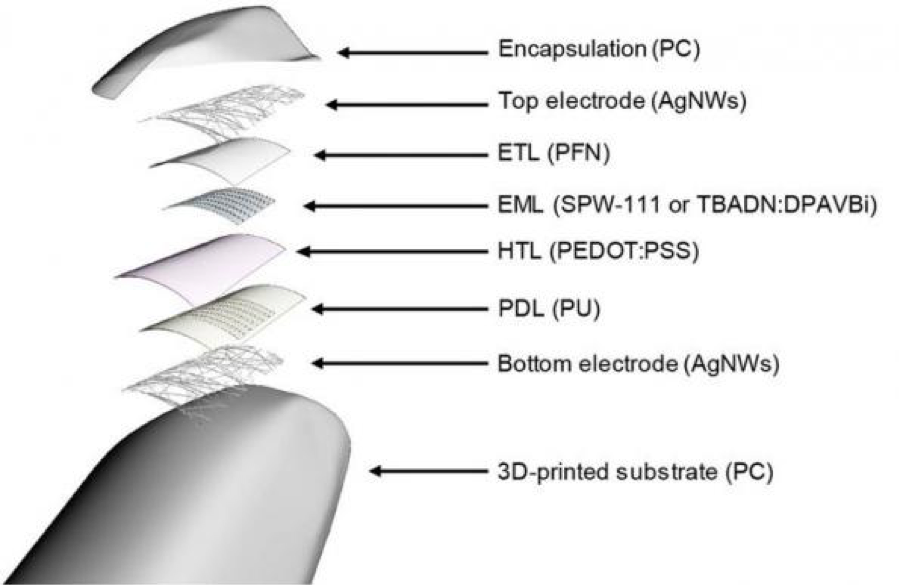Vertical Divider
|
Transparent Encapsulated OLED Printed on 3D-Printed Substrate
November 11, 2019 Researchers from Yonsei University have demonstrated they could print transparent encapsulated OLED pixels directly onto a previously 3D-printed substrate, facilitating the integration of OLEDs into design-conscious wearable applications. Figure 1: High‐Resolution 3D Printing of Freeform Source: Yonsei University
|
|
In a paper titled “High‐Resolution 3D Printing of Freeform, Transparent Displays in Ambient Air” published in Advanced Science, the researchers describe how they overcame the limitations of traditional 3D-printing techniques by combining a digital light processing (DLP) unit to 3D-print a transparent plastic substrate with a 5-axis home-made electrohydrodynamic jet (e‐jet) printer for the subsequent printing of the OLED functional layers. While the DLP method can print transparent plastic frames with arbitrary 3D shapes at resolutions too rough for functional optoelectronic materials, the 3D e‐jet printing method was proven to deliver high‐resolution OLED pixels (in the range of 20×80µm, with a minimum linewidth of 2.6µm) on top of the DLP‐printed 3D mechanical frames. The synchronized, five‐axis stage movement of the e-jet printer allows the hybrid 3D system to print all of the components in series, from 3D mechanical frames to all OLED layers, including encapsulations, as a transparent freeform 3D display. This was all done at ambient temperature without any additional thermal drying or annealing steps To 3D-print the array of transparent OLED pixels, the e‐jet printing system dispensed nanometer-thin layers of functional materials, including silver nanowires as the bottom transparent electrode, photocurable polyurethane for the pixel defining layer, PEDOT:PSS as the hole transport layer, TBADN:DPAVBi as the light emission layer and PFN as the electron transfer layer. A random network of AgNWs were electro‐sprayed by the e‐jet printer as the top transparent electrode before printing the encapsulation layer using the DLP printer. By feeding the topology profile of the 3D‐printed freeform to the e‐jet printer controller, the researchers ensured the e-jet printer nozzle tip could stay close (within a 50µm gap) to the substrate.
|
Contact Us
|
Barry Young
|

